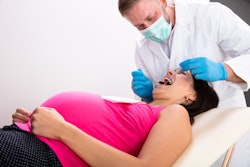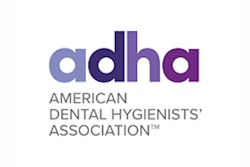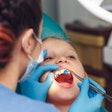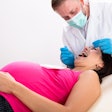Elevated hormones during pregnancy may be significantly linked to an increased risk of developing cavities, according to a University of Rochester Medical Center (URMC) news release dated April 3.
Researchers from the Eastman Institute for Oral Health (EIOH), part of URMC, found that higher levels of progesterone, estradiol, testosterone, and cortisol during pregnancy were linked to higher levels of Streptococcus mutans (S. mutans), a bacteria linked to tooth decay.
"This connection is particularly concerning because the oral health of an expecting mother directly impacts the developing baby," said the study’s co-author Dr. Jin Xiao, PhD, professor and founding director of Perinatal Oral Health at EIOH. "Poor maternal oral health has been linked to an increased risk of premature birth, low birth weight, and early childhood cavities."
Dental caries is twice as common in pregnant women as non-pregnant women, according to the article. In fact, up to 87% of pregnant women have untreated cavities. Untreated dental decay is pronounced in underserved communities, where access to dental care is limited.
To measure levels of six hormones during pregnancy (progesterone, estradiol, testosterone, cortisol, thyroxine [T3], and triiodothyronine [T4]) and determine if hormonal changes in pregnancy influence oral diseases, researchers analyzed 181 women in their third trimester who lived in underserved communities. Demographic data, oral hygiene practices, and medical backgrounds were obtained through medical records and questionnaires. Dentists measured the plaque index and diagnosed dental caries via oral exams. Hormone levels were assessed via saliva samples measured using a multiplex assay. S. mutans and Candida albicans were measured using colony-forming unit (CFU) counts (J Clin Med, May 29, 2024, Vol. 13:11, 3183).
Estradiol, progesterone, testosterone, cortisol, T3, and T4 in saliva measured 92%, 97%, 77%, 99%, 71%, and 50%, respectively, according to the study. Three patient groups, or clusters, were established based on saliva hormone levels.
High and intermediate-level clusters had a higher incidence of decayed surfaces and teeth, higher international caries detection assessment system scores, and higher levels of S. mutans and Candida albicans (C. albicans) versus the low-level group (p < 0.05). Further, covariate analysis showed that the high-level group was linked with S. mutans ( p < 0.05). Women with higher levels of progesterone, estradiol, testosterone, and cortisol also had higher levels of salivary S. mutans (> 105 CFU/ml) (p < 0.05), according to the study.
"This study emphasizes the importance of integrating dental care into prenatal health services, especially for underserved communities where access to preventive care is often delayed," Dr. Ruqian Yang, MS, the study's leading author and an EIOH research fellow and dental resident, said. "By addressing oral health early in pregnancy, healthcare providers may improve outcomes for both mother and child."
The EIOH has established a pioneering Pregnancy and Infant Dental Clinic that specializes in treating pregnant women and their infants, ensuring they receive essential dental care without delay. Earlier this week, the American Dental Hygienists' Association raised concerns over recent staff cuts at the U.S. Centers for Disease Control and Prevention, warning that recent cuts threaten to undo decades of progress in reducing dental disease and health disparities.



















